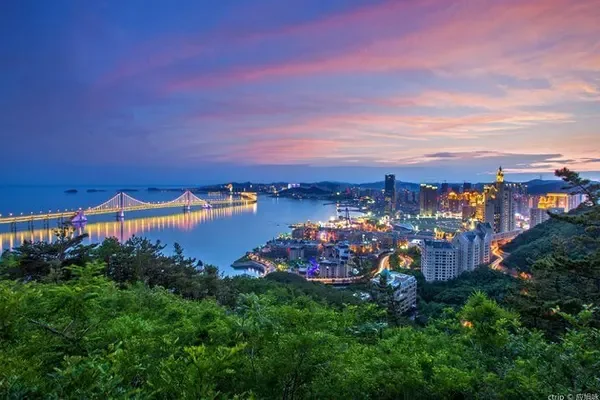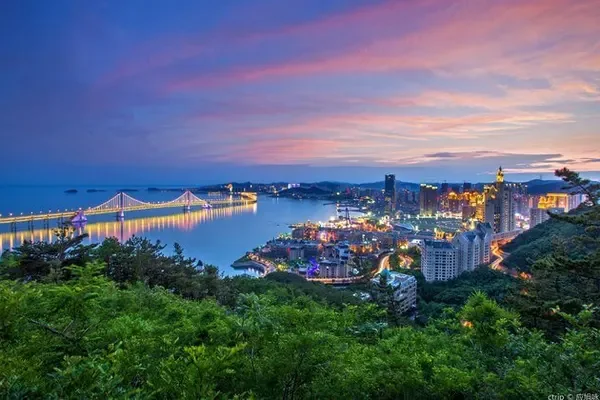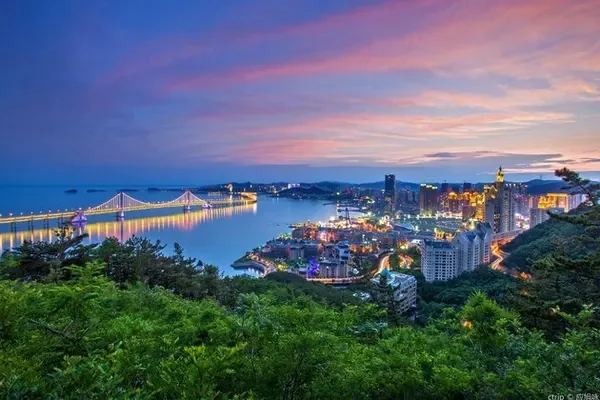Beijing weather: sunny
With whom: friends
Accommodation: Weiming Hotel Yonghegong Branch



Comments: Although the sparrow is small, it has all internal organs. It can be said to be a very accurate summary. Transportation: It is only a three-minute walk from the Zhangzizhong subway entrance. Surroundings: There are two convenience stores, fruit stores, and laundry shops that are relatively close. Famous delicacies are listed from near to far: Zihuoer, (there is a small pancake bar, I forgot the specific name), Tianxingju, Daoxiang Village, Beixinqiao Braised Cooking, Centennial Yili, Zengshengkui Snack Bar, Baikui Time-honored Brand Restaurant, Nanluoguxiang. There are also many shops that the surrounding residents love to eat. The above are the shops within 20 minutes' walk or 10 minutes' by bicycle. TV, air conditioner, hair dryer and kettle are all available. Well, there are windows, which is the best. One of the pillows on the bed is an ordinary soft pillow, and the other should be the kind with a piece of Chinese herbal medicine added? A slightly firmer, thicker pillow. Service: Both the front desk and the cleaning aunt are very enthusiastic, and there are three snacks included. Woke up early in the morning and wandered around in the atrium. Auntie said it was too early and the coffee machine was not plugged in. If you want it, I will get it for you immediately. Next to it is a pot of chrysanthemum tea boiled in a health pot. Also, the general hotel check-in is after one or two o'clock, but I arrived earlier at about twelve o'clock. I called the front desk with the mentality of trying it out, and the front desk told me that there were vacancies and I could check in. I'm so happy . Overall: I struggled for a long time before deciding on this one, and it was also the most expensive of all the options, but after staying here, I felt that it was not wasted money. The most important thing is that its location and transportation are so convenient, followed by the appearance and appearance of the store. The design of the atrium won my heart.
Shijia Hutong

Take Metro Line 5 and get off at Dengshikou, and walk north past Beijing Renyi’s Juyin Theater to arrive at Shijia Hutong.
Shijia Hutong was first recorded in the "Jingshi Wucheng Fangxiang Hutong Collection" in the Jiajing period of Ming Dynasty. There is Shi Kefa's ancestral hall in the alley, and its address is now Shijia Hutong Primary School. Shijia Hutong has gone through the Qing Dynasty and the Republic of China from the Ming Dynasty until today without changing its name (excluding the short-lived "Hongri Road Eighteen Tiao" in "". At that time, almost all place names in Beijing were changed to revolutionary names. ), it can be seen that the stability of its name is quite strong. Celebrities such as Zhang Shizhao and Fu Zuoyi lived in the hutong, and there is also the dormitory of Beijing Renyi.
Best Primary School Historian Primary School

Shijia Primary School was founded in 1939, and Mr. Qi Gong proposed the name of "Shijia Primary School". I knew this famous elementary school in Beijing when I was young. Many national leaders and their children, many celebrities have graduated from this school. Copy and paste a news story:
On November 22, 2009, the Great Hall of the People was full of joy and laughter. More than 7,000 students, alumni and parents gathered to celebrate the 70th anniversary of Shijia Primary School. Leaders attending the party included: Wang Gang, Vice Chairman of the CPPCC National Committee, Li Jinzhang, Vice Minister of Foreign Affairs, Liu Yanhua, Vice Minister of Science and Technology, Jiang Xiaojuan, Deputy Director of the Policy Research Office of the State Council, Wang Anshun, Secretary of the Education Work Committee of the Beijing Municipal Committee of the Communist Party of China, Huang Wei, Deputy Mayor of Beijing, Ding Xiangyang, Chen Ping, vice chairman of the Beijing CPPCC, Yang Hui, head of the Second Department of the General Staff, Tao Xiping, advisor to the National Chief Inspector, Yang Liuyin, secretary of the Dongcheng District Committee of the Communist Party of China, Yang Yiwen, mayor of Dongcheng District, Liu Jian, deputy secretary of the Beijing Municipal Education Work Committee of the Communist Party of China, Beijing Yan Liqiang, Deputy Director of the Publicity Department of the Municipal Party Committee, Wang Hongbing, Director of the Propaganda Department of the Dongcheng District Party Committee, Jin Xu, Deputy Director of the Dongcheng District People's Congress, Wang Jianjun, Vice Chairman of the Dongcheng District Political Consultative Conference, Yuan Weimin, Secretary of the Education Work Committee of the Dongcheng District Party Committee of the Communist Party of China, Cai Fuquan, Director of the Dongcheng District Education Committee, and the Municipal Education Trade Union Chairman Zhang Qingshan, Deputy Secretary of the Education Working Committee of the Dongcheng District Committee of the Communist Party of China Zhao Qiyu, Chairman of the District Education Union Gao Huaining, Deputy Directors of the Dongcheng District Education Committee Liu Zao and Zhu Changlin. The party was hosted by Pu Cunxin, vice president of Humanities and Arts, and Yang Lan, a famous host.
All-China Women's Federation Good Garden

Legend has it that this was once the outer house of the great eunuch Li Lianying, and it is even said that Li has hidden a lot of treasures here. After the Republic of China, it was once owned by General Zhang Zizhong. After General Zhang died in the country, it was taken back by the National Government until it was liberated and was taken over by the National Women's Federation.
Today's Haoyuan plaque was personally inscribed by Deng Yingchao, who was in charge of women's work at that time, because the word "hao" was split into two characters for women, which was used as a metaphor for the garden of women's activities. The prototype of Qu Xia, the legendary Shuai Mengqi, Cai Chang and Kang Keqing all once worked here. In 1998, Mr. Wei Yixin, the former Governor of Hong Kong, took a rest here in Beijing. British Prime Minister Blair visited China in 1999, and his wife Cherie Blair held a reception here.
Shijia Hutong Museum with stories of old Beijing

The Shijia Hutong Museum is the first Hutong museum in Beijing. The original owner of the courtyard is Ling Shuhua, one of the three talented women in the Republic of China. The museum introduces the courtyard layout of Shijia Hutong, the celebrities who lived there and their stories, and there are young ladies explaining it, which is very worth a visit. In addition, there is a starling as soon as you enter the gate. If you say good morning, it will reply you good evening...








There is a room in the museum with the sound of the alley. I recorded a piece of hawking in the street, but I don’t know why it couldn’t be heard.

Go east along Shijia Hutong to Chaonei Nan Street and go south, you will see Lumi Cang Hutong. This place is very close to Chaoyangmen. In the past, Chaoyangmen used grain carts. The nearby alleys are related to grain and warehouses. What? Ganmian Hutong, Lumicang Hutong, Dongmencang Hutong and so on. Going east along Lumicang Hutong, you can see Zhihua Temple.
Zhihua Temple where donations are prohibited
Zhihua Temple is located in the north of Lumicang Dongkou Road, Dongcheng District, Beijing. In the early Ming Dynasty, Wang Zhen, the eunuch who supervised ceremonies, was built in the eighth year of Zhengtong (1443), imitating the regulations of the "Seven Halls of Jialan" in the Tang and Song Dynasties. At first it was a family temple, and later it was named "Baoen Zhihua Temple".
Zhihua Temple is most famous for its Beijing Music and Zaojing. Jing Music plays at 10:00 am and 15:00 pm every day. The explanation time in the temple is 10:20 and 15:20, but this explanation time is not fixed, the volunteers will adjust according to their own time, the volunteer I saw a few days ago is a retired aunt, knowledgeable, before retirement Should be doing research.

As soon as you enter the courtyard, you will see the Zhihua Gate and the Bell and Drum Tower.



caisson and runner
The remaining caissons and runners in Zhihua Temple are in the Tibetan hall on the west side. The caisson is the most advanced method in the indoor ceiling of ancient Chinese temples. When the ancients lived in caves, holes were opened on the top to receive light, pass light, and go in and out. This form is still retained after the appearance of houses in the future. Its shape is like a concave well, and the "well" is decorated with algae, so it is called caisson. The algae well is usually located above the indoor Buddha statue, in the shape of an umbrella, supported by fine bucket arches, symbolizing the loftiness of the sky. There are usually colored paintings and reliefs on the algae well.
Zhihua Temple originally had three caissons. They are respectively inlaid on the top of the three groups of buildings: Tibetan Hall, Zhihua Hall and Wanfo Pavilion. The algae wells of Zhihua Hall and Wanfo Pavilion are much more magnificent and beautiful than those of Tibetan Hall, but they were sold to the Americans by the host at that time in 1930. One is in the Philadelphia Museum of Art and the other is in the Nelson Atkins Museum. Let's go to the algae well of the Tibetan Temple, which the Americans didn't like.


The Tibetan Buddhist scriptures are stored in an octagonal sutra cabinet. There is a shaft in the center of the cabinet, which is supported on the beam frame and supported on the ground. Buddhists believe that turning this cabinet can get the same merit as chanting scriptures. The sutra cabinet is beautifully decorated, and the top is often decorated with heavenly palaces and pavilions. A special hall is built to accommodate the sutra cabinet, which is called the runner hall.


The entire runner is 4 meters high and consists of three parts: a white marble Xumi base, a wooden eight-sided sutra cabinet, and a Vairocana Buddha sitting on the top facing east. There are six objects carved on the sutra cupboard, including golden-winged roc, dragon girl, whale and other hidden secret dharma images, which are very worth seeing! !



Beijing music that has been passed down for more than 500 years
Zhihua Sijing music has been passed down for more than 570 years, and is known as the "living fossil" of ancient Chinese traditional music. During the Daoguang and Xianfeng years of the Qing Dynasty, the music of Zhihua Temple gradually spread from the temple to the surrounding areas of Beijing, thus becoming the representative of northern Buddhist music, and was dubbed "Jing Music" by the people at that time. Zhihua Sijing Music has Gongchi notation books with clear dates, distinctive musical instruments, tune cards and Ci cards, and performance monks passed down from generation to generation. It is the oldest surviving traditional music in my country, just like the drum music of Xi'an Chenghuang Temple, the music of Daxiangguo Temple in Kaifeng, the music of Qinghuang Temple in Wutai Mountain and the Nanyin of Fujian.


The current performer is the 27th generation descendant of Jing Music. Jing Music uses wind instruments as the main instrument, supplemented by percussion instruments such as gongs, drums, and chimes. There are seats on both sides. The performance time is 15 minutes. Less foreign audience.

The murals of Ksitigarbha Bodhisattva in Zhihua Hall. This mural was originally in Chongwenmen, but was moved here later.
There are only 9,999 Buddhas in the Ten Thousand Buddhas Pavilion
There are nine thousand nine hundred and ninety-nine Buddhas, large and small, in the Ten Thousand Buddhas Pavilion, plus the one in your heart, it becomes the Ten Thousand Buddhas Pavilion.



An incense burner from the Wanli period of the Ming Dynasty weighed three thousand catties.
Zongbu Hutong, which has nothing to do with Bu
Zongbu Hutong is located in Jianguomen Street, Dongcheng District, Beijing. It was formed in the Yuan Dynasty and belonged to Mingshifang in the Ming Dynasty. Because the Zongbu Hutong was established here, it is called Zongbu Hutong or Zongpu Hutong. In the Qing Dynasty, it belonged to the Xiangbai Banner. It was called the Headquarters Hutong in the Qianlong period, and it was divided into the Dongzongbu Hutong and the Xizongbu Hutong with the South Street as the boundary in the Xuantong period. In the thirty-sixth year of the Republic of China (1947), the original Chenghuangmiao Street was renamed Beizongbu Hutong, and the name has been used to this day.
Zhang Lan and Shen Junru, veterans of the Kuomintang, Japanese conductor Seiji Ozawa, and Ma Yinchu, president of Peking University, all lived in Dongzongbu Hutong.
The most famous incident in Xizongbu Hutong is that German Minister Klind was beaten to death in Beijing at the west entrance of Xizongbu Hutong. It was Enhai, the eighth gun team of the Tingzi team of the Shenji Camp, who killed Klind. This incident led to the occupation of Beijing by the Eight-Power Allied Forces. On December 31, Enhai was shot dead by the German army at the west entrance of Zongbu Hutong. Before his execution, Enhai said solemnly: "I died because of killing the enemy, and I have no regrets in death." , signed the "Xin Chou Treaty". The first article of the treaty is not compensation, but requires China to erect a monument for Klind. On January 8, 1903, at the west entrance of Zongbu Hutong on Dongdan North Street, the Kelinde Monument, which represented a history of humiliation in China, was completed. It is called "monument" in name, but in fact it is a Chinese-style archway (also called archway) with four pillars, three rooms and seven floors. On November 11, 1918, the First World War ended. Germany became a defeated country. The Beiyang government became a "victorious country", and the Klinder monument used to apologize to the Germans was removed, and it was moved to Central Park (now Zhongshan Park) in 1919, and it was rebuilt into the "Justice Victory" archway. In October 1952, the Asia Pacific Peace Conference was held in Beijing. In order to express the desire of the participating countries to defend world peace, the conference decided to change the name of the "Axiom over Victory Archway" in Zhongshan Park to "Defend Peace Archway".
Liang Sicheng, Lin Huiyin, Jin Yuelin lived in Beizongbu Hutong, and the residence built by oil magnate Rockefeller for his parents. In addition, the "May 4th" Movement's burning Zhaojialou site is also nearby.
Sichuan Cuisine Restaurant Not Available in Other Places——Gongyuan Shulou · Sichuan Office Restaurant
There is a special category of restaurants in Beijing. Most of these restaurants have a long history and pure taste, and can represent the cuisines of all parts of China. They are the Beijing Offices of various provinces and cities. Sichuan Beijing Office is located at the intersection of East Headquarters Hutong and Beizongbu Hutong. It’s been a long time since the last time I went to the attached Sichuan Office restaurant. It was still raining at 2 o’clock in the afternoon and we had to wait for a table, which was really hot. Maoxuewang, Chuanbei jelly, couple's lung slices, etc. are recommended.



Ancient Observatory
The Beijing Ancient Observatory was built in the Zhengtong period of the Ming Dynasty and is one of the oldest observatories in the world. It is famous for its complete architecture, exquisite instruments, long history and unique position in the cultural exchange between East and West. The observatory was called the "star observatory" in the Ming Dynasty. There are large-scale astronomical instruments such as simple spheres, armillary spheres and armillary phases on the stage, and there are guibiao and clepsydra off the stage. In the Qing Dynasty, the observatory was renamed the "Observatory", and after the Revolution of 1911, it was changed to the Central Observatory. During the Kangxi and Qianlong years of the Qing Dynasty, eight large copper astronomical instruments were successively added to the observatory, all adopting the European astronomical measurement system and instrument structure. They are not only practical astronomical observation tools, but also unique historical relics.




soul map



